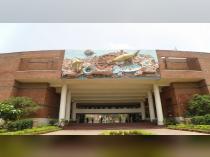I have not given JEE Mains entrance due to some emergency. Now how can I get admission in NSIT?
Asked about Netaji Subhas University of Technology - Discontinued (2025)- B.Tech. in Computer Engineering
-
1 Answer
-
Hello Abhishek,
No, there is not any other separate entrance exam way for UG course. So if you want to get admitted into NSIT then you must have appear for JEE Mains. And good rank in JEE mains too. After getting a good rank in jee mains. You have to fill a separate form for counselling JAC DELHI. In order to take admission in NSIT you have to appear for JEE Main then you have to participate in JAC Counselling.
This year cut-off rank for All India level is 4867.
Thanks.
Similar Questions for you
COEP Pune JEE Main cutoff 2025 has been released for all rounds and categories belonging to the All India quota. The JEE Main cutoff 2025 ranged from 3867 to 28286 for the students belonging to the General AI category in the first and the last round closing ranks. Students who are aiming for admission should secure a rank of at least 3867 to be have a chance at admissions. Please note that other categories and rounds will reflect different cutoffs accordingly.
Nirma University JEE Main cutoff 2024 has been released for admission to BE/BTech and BArch courses. In 2024, the cutoff for the General AI category was 22002 in the last round for admissions at Nirma University for the BArch programme. For the BE/BTech course, the cutoff for the General AI category was closed at 10642 for admissions to B.Tech. in Civil Engineering course specialisations.
If candidates are facing issue in live photo capture, it can be due to mismatch from photo uploaded in Aadhar. For this, they need to visit the Aadhar update centre and get their current photo updated in the Aadhaar database.
The issue can also be due to any servor error/slow internet connectivity for which candidates can try uploading it after some time. Also, there can be a case of laptop/computer not supporting the webcame, for this, candidates can upload the photo using QR code provided in the application process.
Who work on the rocket-propelled vehicles, they apply the principles of Mathematics, Physics, and Material Science to solve challenges related to these vehicles. Rocket Scientists are involved in the process of design and development of the vehicles such as small drones, satellites, and commercial aeroplanes.
Yes, this field is considered hard. It is complex and demands high precision. There can be extreme consequences for minor errors. The overall field is extremely challenging as it requires to apply the basic scientific principles to design and develop rockets. It requires sophisticated engineering with careful material selection, and allows narrow margin for error.
Taking an Exam? Selecting a College?
Get authentic answers from experts, students and alumni that you won't find anywhere else
Sign Up on ShikshaOn Shiksha, get access to
- 65k Colleges
- 1.2k Exams
- 681k Reviews
- 1800k Answers

